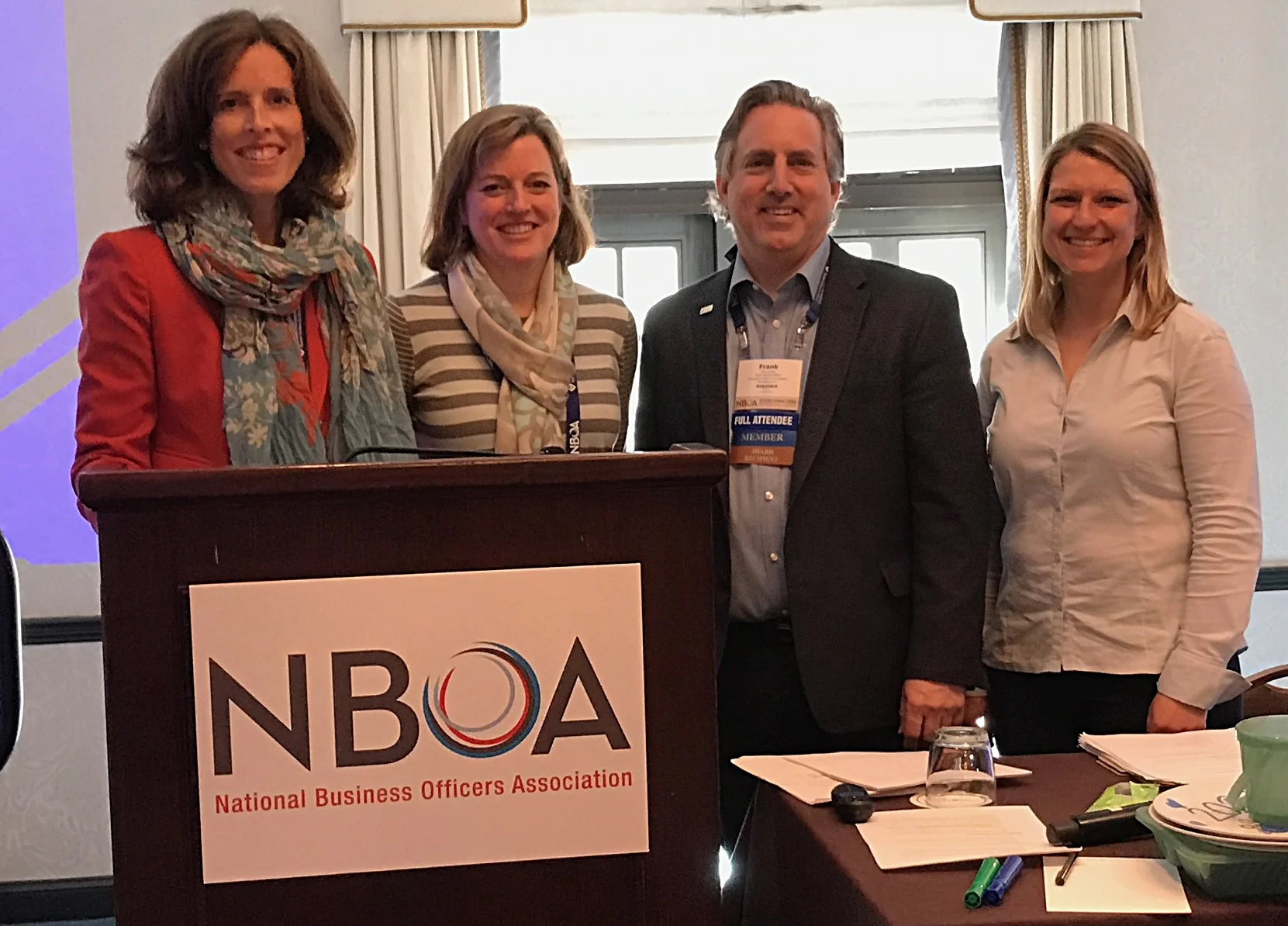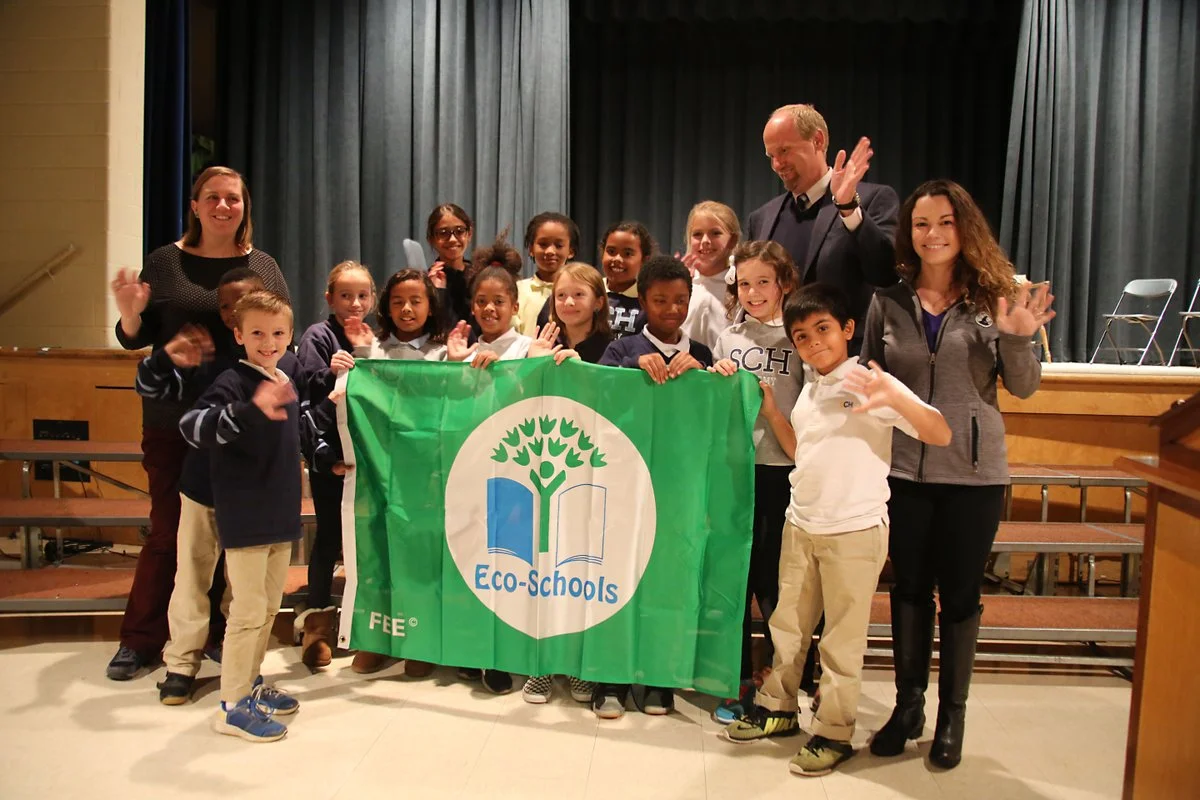In every division, Friends’ Central students are taking a leadership role when it comes to waste generated on their campuses. This is just one of the many steps the School has taken to reduce environmental waste and improve sustainability efforts in the last few months.
SCH Academy Wins National Sustainability Award
Springside Chestnut Hill Academy recently earned the Green Flag award from the National Wildlife Federation’s Eco-Schools USA program, making it the first independent school in Pennsylvania to win this award for sustainability progress. SCH’s green footprints have been purposeful over the past two decades. Its initiatives have extended from the classroom to the roofs and from the cafeterias to the Wissahickon Watershed. In 2012, the U. S. Department of Education recognized SCH as a Green Ribbon School. SCH joined the Eco-Schools USA program in order to have additional benchmarks to accelerate progress.
How to Reduce Printer Waste at Your School
How much paper do you use in a single year? A single piece of paper doesn’t seem like much - but it can quickly add up. In fact, the average person in the United States uses over 700 pounds of paper products in a single year! That means the average American will go through nearly 2 pounds of paper a day. SCH Academy students and faculty tackled the school’s printer waste in their “Think Before You Print Campaign.”
Transforming Schoolyard Habitats and Nature Play Spaces Offer Students More than Exercise
William Cramp Community School's new playspace.
This spring, Boyer Sudduth worked with PA Green and Healthy Schools Partnership (PAGHSP) on a series of educational webinars and workshops for school administrators, teachers, and staff focused on efforts to “green” schools. On April 6, 2017, PAGHSP featured a webinar called “Transforming Schoolyard Habitats and Nature Play Spaces,” which can be viewed below.
In the webinar, Director of Interpret Green & Neighborhood Nature Works in Philadelphia, Craig Johnson, and Sr Policy Advisor for the MD Dept of Natural Resources, Sandi Olek, share their expertise on creating wildlife habitats and nature play spaces for schoolyards, playgrounds, and parks. Sandi shows examples of innovative play environments built from natural elements. Craig illustrates excellent examples on how schools can enhance outdoor playspaces by adopting guidelines from National Wildlife Federation to create innovative “learning landscapes.” These landscapes can include pollinator gardens, bird feeders and houses, bug magnifier posts, sundials, compass roses, naturecams, and weather stations for environmental education and free-play exploration. Here, children can study nature and enjoy recreation in the same location. Craig and Sandi also shared a list of kid-friendly nature tools for observing and recording critters.
According to Craig, nature habitats help playspaces come alive. Craig’s work with Philadelphia’s William Cramp Community School gives students direct and daily access to the wondrous web-of-life. Birds, butterflies, bees, beetles, bats, and a host of native plants provide endless opportunities for children to connect with nature and each other. Craig notes, “Within two days of installing the bird feeders, mourning doves, sparrows, and finches were singing in schoolyard.” Another teacher reflects, “I have been here for 20 years. This is the first time I have ever seen birds at this school. The students are so delighted.”
In competition with television, phones, and video games, “unplugged” outside time is critical to a child’s playtime and development now more than ever. The American Academy of Pediatrics recommends 60 minutes of unstructured free play as an essential part of children’s physical and mental health and social development. Click here for a link to the webinar.
A William Cramp student in the school's new garden.
Article submitted by Emily Tronson, a junior majoring in Ecology & Evolutionary Biology and English Literature at the University of Rochester who is currently interning at Boyer Sudduth Environmental Consultants.
Wendy Turner: It Takes a Village to Be Green
How much of a difference can one teacher make? When it comes to environmental sustainability, Wendy Turner, a second grade teacher at Mt. Pleasant Elementary School, shows that one teacher can inspire the “greening” of a whole school. Turner’s leadership sparked enthusiastic support and hard work from her peers, students, parents and the school’s administration.
AFS Students Make a Difference with Non Profit Neighbors
Students will remember Abington Friends as a school where “place-based” education wasn’t just theory. Place-based education binds organizations and schools to collaborate on local causes. Over the years, AFS students worked with neighboring non-profits to become community stewards. Lower school science teacher, Rosanne Mistretta, stands at the hub of the school’s community partnerships. Walk into her classroom and you will see structures made from twigs and seeds when students built fairy houses, observational drawings and photos when they planted trees along a stream, and germinating seeds to be used by a local farm. All of these exemplify work students have done with community partners.








